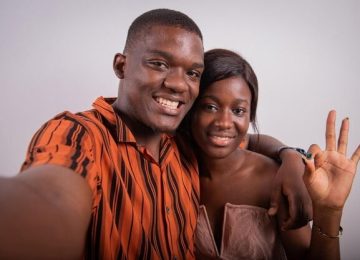Sexuality in the 2.0 era is full of many concepts that, although may seem difficult to understand or digest, there is only one reality: we must accept that we are different.
Today I will talk to you about a term put forward by Lisa Diamond, professor of psychology and gender studies at the University of Utah, United States, who, in her book, ‘Sexual Fluidity: Understanding Women’s Love and Desire’, investigates relationships, sexual orientations and identities, revealing that women’s sexuality seems to have more fluidity than men’s.
In that order of ideas, psychologist and sexologist Noelia Benedetto, a specialist in non-monogamous relationships, explains: “Terms such as heteroflexible or flexisexual began to appear to define precisely those people who reported themselves as heterosexual, but not exclusively so”.
According to the expert, situations affect people’s sexual responsiveness; meaning, sexual flexibility makes it possible to experience attraction to a man, a woman or a non-binary person, depending on the circumstances. In other words, sexual orientation is fluid and not static.
Sexologist Benedetto says that: “Sexual fluidity is not taken as an orientation, but as a matter of attraction. It could be defined as the capacity of some people to adapt their orientation to the affective or situational context”.
Therefore, this flexibility depends on each situation or circumstance and goes beyond orientations such as homosexual or heterosexual: ‘Sexual orientation may change over time and rather than fitting into strict categories, people may as well experience attraction to different genders at different times in their lives’.
Bendetto describes three characteristics of sexual fluidity:
Non-exclusive attractions: people may be attracted to any gender.
Changes in attraction: at one time they may be attracted to a male, a female or a non-binary person, even after having been in a long-term relationship with someone of another gender.
Person, not gender: sexual attraction is more about the person rather than the gender. Therefore, it is an attraction that does not become an orientation.
When people talk about sexual fluidity, they tend to confuse it with bisexuality. Psychologist Benedetto assures: “Fluidity is not considered an orientation, because in the case of bisexual people, they experience attraction and orient themselves towards people of the same and the other gender, while people with fluid sexuality may experience changes in attractions over time, which is precisely not so anchored to fixed categories”.
Flexisexuals, the expert explains, are people who at some point consider and recognise themselves as heterosexual, but may be attracted to someone of the same or another gender, but not exclusively.
‘The heterosexual person does not exclude the possibility of having some kind of sexual or affective encounter or relationship with other people of other orientations. Because even when people experience significant changes in patterns of erotic response or attraction, they consider those changes to be unexpected and beyond their control,’ she says.
Some studies show that some women can have relationships with both genders. According to a study carried out by psychologist Diamond in 2008, she established that for 10 years she analyzed the behavior of 70 lesbian, bisexual and heterosexual women. During the study, in that decade, two-thirds of the women changed their initial identity label and one-third did so at least twice.
“More women switched to a bisexual or unlabeled identity in contrast to the ones who gave up these identities; some bisexual or unlabeled women ended up identifying as lesbian or heterosexual. Overall, the most adopted identity was the unlabeled one”, Diamond says.
The #sinrecato question would be: Is sexual fluidity exclusive to women? It’s likely. According to sex educator Emily Nagoski, author of the book ‘Good in Bed Guide to Female Orgasms’.
“Making space for fluidity is a legitimate part of sexual orientation, it may help women, but it certainly wouldn’t hurt men, who have some fluidity as well, just not as much as women”, says Nagoski.
“Women’s experience of sexual orientation is not continuous and is more variable than men’s, who typically define themselves more in advance and also stick to their orientation across different situations,” she adds.
She also says that while some men tend to identify as straight, gay or bisexual early on, many women may have relationships with both men and women without choosing a specific sexual orientation.
And she explains that a single signal can trigger arousal in the male brain, while the female brain requires multiple signals to become aroused. This suggests that women are able to see people as attractive, regardless of their orientation.
For some, affective and sexual relationships are not directed at a gender or a determined sexual orientation, but rather at what that person inspires in you, without any labels.
Traducción del español: Catalina Oviedo Brugés
















